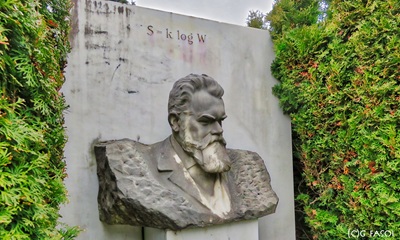
Pioneering University of Queensland-led work in the field of quantum physics could be a critical tool in the ongoing quantum revolution, offering new insights and possibilities for future quantum technologies.
Entropy is a cornerstone concept in physics, deeply intertwined with the principles of thermodynamics, statistical mechanics, and quantum information theory. Broadly speaking, entropy measures the degree of disorder within a system: highly ordered systems exhibit low entropy, while highly disordered systems have high entropy.
The 19th century Industrial Revolution was powered by an understanding of the relationships between entropy, heat, and work in classical thermodynamics, leading to innovations like heat engines and refrigerators. Today, as we enter the second Quantum Revolution – fuelled by advances in quantum technologies – grasping similar relationships in the quantum realm is poised to drive transformative breakthroughs in quantum applications.
The first rigorous mathematical definition of entropy was introduced by Austrian physicist Ludwig Boltzmann between 1872 and 1875. Boltzmann defined entropy in terms of the multiplicity function W, which represents the number of distinct microscopic configurations that share the same energy. His famous entropy formula, S = k log W, is etched onto his tombstone in Vienna, symbolising its profound impact on physics.
Despite its fundamental nature, directly calculating or measuring entropy, especially in quantum many-particle systems, poses significant challenges. However, a new study by physicists Dr Raymon Watson, Mr Caleb Coleman, and Prof. Karen Kheruntsyan from The University of Queensland presents a groundbreaking, simplified method to calculate entropy using particle-particle pair correlation functions.
The concept of correlation functions became widely recognised through the Nobel Prize-winning theory of optical coherence developed by Roy Glauber in the 1960s (Nobel Prize in 2005). Glauber’s work, which applied these functions to photons – the particles of light – was instrumental in differentiating between light emitted by lasers and light bulbs, and in exploring a wide range of phenomena in quantum optics, including the Einstein-Podolsky-Rosen paradox and Bell inequality violations, a topic that was central to the 2022 Nobel Prize in Physics.
Glauber’s correlation functions have since been generalised to describe ultracold atoms and condensed matter systems, which are more pertinent to quantum thermodynamics and potential quantum technologies. It is within this framework of quantum thermodynamics and ultracold atoms that Watson, Coleman, and Kheruntsyan have unveiled their novel relationship between entropy and atom-atom pair correlation functions.
This newly discovered relationship serves as a bridge between classical thermodynamics and quantum many-body physics. It holds the potential to illuminate unsolved problems in quantum many-body theory, identify new phases of quantum matter, and reveal the thermodynamic properties of cutting-edge quantum materials.
The research has been published in Physical Review Letters 133, 100403 (2024).
Media: UQ Faculty of Science Media, science.media@uq.edu.au, +61 438 162 687.



